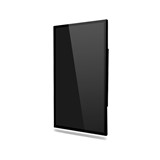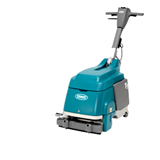Key Takeaways
- Remove dollar signs from prices. Studies show that simply removing the "$" symbol (listing a price as "28" instead of "$28.00") can increase average spend because it de-emphasises the cost and reduces the "pain of paying.”
- Use the 'golden triangle'. A diner's eyes typically go to the middle of the page first, then the top-right corner, then the top-left. Place your highest-margin items (your "Stars") in these prime real estate spots.
- Leverage price anchoring. Place a very expensive item at the top of a category. This "anchor" makes the other items below it appear more reasonably priced, encouraging customers to choose the second or third most expensive option.
- Descriptive language sells. A dish described as "Slow-braised Victorian lamb shank" will sell up to 27% more than one simply listed as "Lamb shank." Use vivid, appealing adjectives and mention provenance to increase perceived value.
- Don't list prices in a single column. Aligning prices in a neat column on the right encourages customers to scan for the cheapest option. Instead, embed the price at the end of the description in the same font.
Introduction: Your menu is your most valuable salesperson
In the highly competitive Australian hospitality landscape of 2025, every detail matters. With tight profit margins, rising ingredient costs, and price-sensitive consumers, your menu is much more than a simple list of what's on offer; it's your single most important piece of marketing collateral. When designed correctly, your menu can actively guide customer choices, increase your average spend per head, and significantly boost your profitability, all without you having to say a word.
Many Australian venues, however, still treat menu design as an afterthought. According to a recent industry analysis, the average profit margin for an Australian restaurant hovers between a slim 3-5%. This leaves very little room for error. By applying proven principles of consumer psychology to your menu's layout, language, and pricing, you can turn it into a powerful, silent salesperson that works for you every single service. This guide will break down the practical, low-cost strategies you can implement to engineer a more profitable menu.
The 'golden triangle' and guiding the eye
Years of research into how people read menus has revealed a consistent pattern. We don't read them like a book (from top to bottom). Instead, our eyes tend to follow a specific path:
- First, we look at the middle of the page.
- Next, our eyes move to the top-right corner.
- Finally, we look at the top-left corner.
This sequence is known as the "golden triangle," and these three spots are your menu's prime real estate. This is where you should place your star items—the dishes with the highest popularity and the highest profit margins. Placing them here ensures they are seen first and are more likely to be chosen. Conversely, low-margin items that you are happy to sell but don't want to push (like a simple side of fries) should be placed in the less-viewed bottom-left corner.
The psychology of pricing: Making costs less painful
The way you present your prices can have a dramatic impact on how customers perceive the cost and value of their meal. The goal is to minimise the "pain of paying" and shift the focus from cost to experience.
- Remove the dollar sign. Numerous studies have shown that removing the "$" symbol makes the price feel less like "money." A price listed as 28 is psychologically less impactful than one listed as $28.00. It's a subtle change, but it consistently leads to higher spending.
- Avoid price columns. One of the biggest mistakes is listing all your prices in a neat column down the right-hand side of the menu. This design encourages customers to scan the list and use price as their primary decision-making factor. Instead, place the price discreetly at the end of the item's description, in the same font size, so the customer's focus remains on the food.
- Use price anchoring. This is a powerful technique to make your main items seem like better value. Place a single, very expensive item at the top of a section. For example, a steakhouse might list a "$180 Wagyu Tomahawk for Two" at the top of their "Mains" section. Very few people will order it, but it acts as an "anchor," making the "$58 Scotch Fillet" directly below it seem like a reasonable and attractive price by comparison.
The power of words: Selling the sizzle, not just the steak
The language you use to describe your dishes can be the difference between a best-seller and a flop. Vague, simple descriptions do nothing to entice a customer. Vivid, multi-sensory language, however, creates an appealing mental image and justifies a premium price.
A foundational study found that a descriptive menu label can increase sales of an item by up to 27%. To do this effectively:
- Use appealing adjectives: Words like "slow-braised," "line-caught," "wood-fired," "hand-crafted," and "freshly-picked" create a sense of quality and care.
- Mention provenance: Highlighting the origin of key ingredients appeals to the Australian consumer's growing interest in supporting local producers. "Bangalow sweet pork," "Tasmanian salmon," or "Yarra Valley goat's cheese" all increase the perceived value and quality of a dish.
- Focus on nostalgia and authenticity: Names like "Grandma's Classic Apple Crumble" can evoke positive emotions and a sense of comfort, making a dish more appealing than a simple "Apple Crumble."
A realistic scenario: The unloved fish dish
A coastal restaurant in NSW has a "Grilled Fish of the Day" on its menu for $34. It's a high-profit item but sells poorly.
- The problem: The name is boring and gives the customer no reason to choose it over a more familiar dish like Fish and Chips.
- The solution: They rename and redescribe it:
Line-Caught North Coast Snapper
- Freshly caught this morning off Coffs Harbour, grilled until crisp and served with a lemon-butter sauce and seasonal greens. - 34
The new description uses provenance ("North Coast Snapper," "Coffs Harbour"), appealing adjectives ("crisp"), and a more enticing description. This simple, zero-cost wording change can transform an underselling dish into a popular, high-profit star.
Menu engineering: A simple matrix for profitability
Menu engineering is the process of analysing the profitability and popularity of every item on your menu and using that data to inform your layout and design decisions. You can categorise every dish into one of four categories:
- Stars (High Profit, High Popularity): These are your best-sellers that also make you great money. Action: Highlight them. Place them in the "golden triangle" and give them a more descriptive name.
- Ploughhorses (Low Profit, High Popularity): These are crowd-pleasers that don't make you much money, like a basic chicken schnitzel. Action: Don't remove them, but try to increase their profitability. Can you slightly reduce the portion size of the side dishes, or use a more cost-effective cut of meat?
- Puzzles (High Profit, Low Popularity): These are the high-margin dishes that no one seems to order. Action: These are your hidden gems. Give them a new, more exciting name, write a more vivid description, or make it a "Chef's Special" to draw attention.
- Dogs (Low Profit, Low Popularity): These dishes are taking up valuable menu space and not contributing to your bottom line. Action: Remove them.
By conducting this simple analysis every six months, you can continuously refine your menu to maximise its profitability.
Design and materials: The physical message
The physical menu itself sends a powerful message about your brand and price point. The weight, texture, and layout should all be consistent with the experience you are offering.
- Fine Dining: A heavy, leather-bound menu with thick, high-quality paper stock suggests luxury and justifies a higher price point. The menu might be sparse, with plenty of white space to convey elegance.
- Casual Cafe: A clean, single-page menu on a clipboard or a well-designed card feels modern, efficient, and appropriate for a fast-paced environment.
- Family Restaurant: A durable, laminated menu that is easy to clean is practical. It might use more colour and photos to appeal to a broader audience.
The quality of your physical menu is a direct reflection of the quality your customers can expect from the food.
Conclusion
In the challenging Australian hospitality market, optimising your menu is one of the highest-return, lowest-cost activities you can undertake. By moving beyond a simple list of products and applying the proven principles of menu psychology, you can transform your menu into a strategic tool. A well-engineered menu guides customer choice, increases average spend, and directly improves your profitability, giving you a crucial competitive edge in a crowded market.


-160x160-state_article-rel-cat.png)
-160x160-state_article-rel-cat.png)


